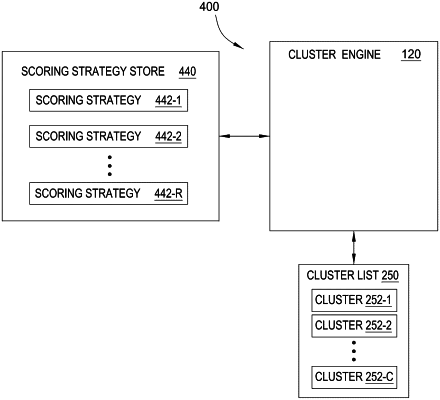| CPC H04L 63/145 (2013.01) [G06F 16/23 (2019.01); G06F 16/244 (2019.01); G06F 16/24578 (2019.01); G06F 16/2465 (2019.01); G06F 16/26 (2019.01); G06F 16/283 (2019.01); G06F 16/285 (2019.01); G06F 16/287 (2019.01); G06F 16/288 (2019.01); G06F 16/335 (2019.01); G06F 16/35 (2019.01); G06F 16/355 (2019.01); G06F 16/9535 (2019.01); G06Q 10/10 (2013.01); G06Q 20/382 (2013.01); G06Q 20/4016 (2013.01); G06Q 30/0185 (2013.01); G06Q 40/00 (2013.01); G06Q 40/02 (2013.01); G06Q 40/03 (2023.01); G06Q 40/10 (2013.01); G06Q 40/123 (2013.12)] | 19 Claims |

|
1. A computer system comprising:
one or more computer readable storage devices configured to store a plurality of captured communications; and
one or more hardware computer processors in communication with the one or more computer readable storage devices and configured to execute computer executable instructions to cause the computer system to:
execute a cluster engine configured to at least:
generate, based on a plurality of captured communications, a filtered collection of captured communications, wherein the captured communications include user-agent strings;
determine, based on the filtered collection of captured communications, a first set of captured communications associated with a first time period, and a second set of captured communications associated with a second time period;
identify a first captured communication in the first set of captured communications that is not included among the second set of captured communications, wherein the first captured communication indicates a new user-agent string associated with the first time period and not associated with the second time period;
designate the new user-agent string as a seed;
generate a data item cluster based on the designated seed; and
determine scores for the data item cluster and a plurality of additional data items clusters generated based on user-agent-related data items; and
execute a workflow engine configured to at least:
cause presentation of the data item cluster and the plurality of additional data item clusters in a user interface of a client computing device; and
cause ordering of the presented data item cluster and the plurality of additional data item clusters in the user interface based at least in part on the respective determined scores for the data item cluster and the plurality of additional data item clusters.
|